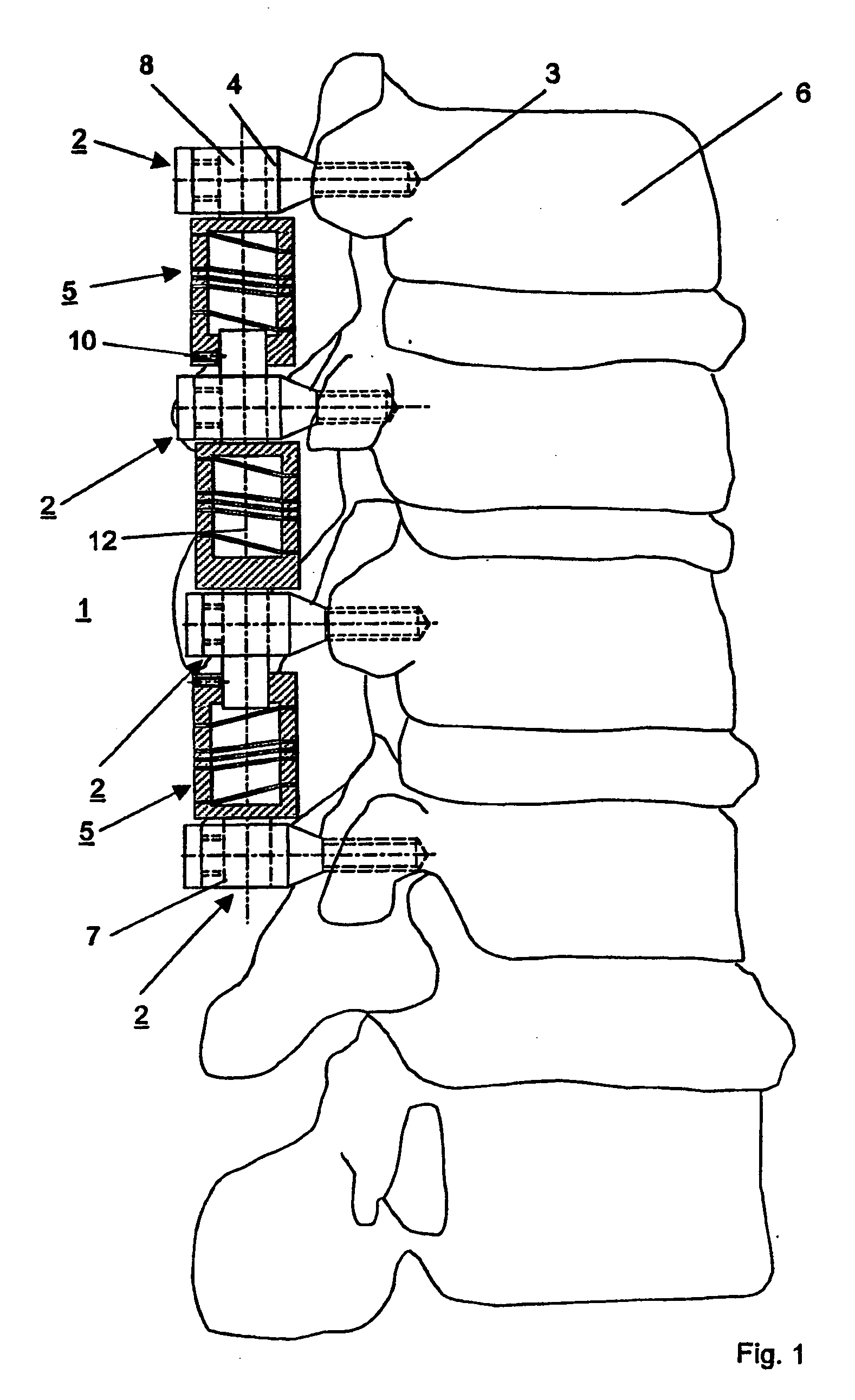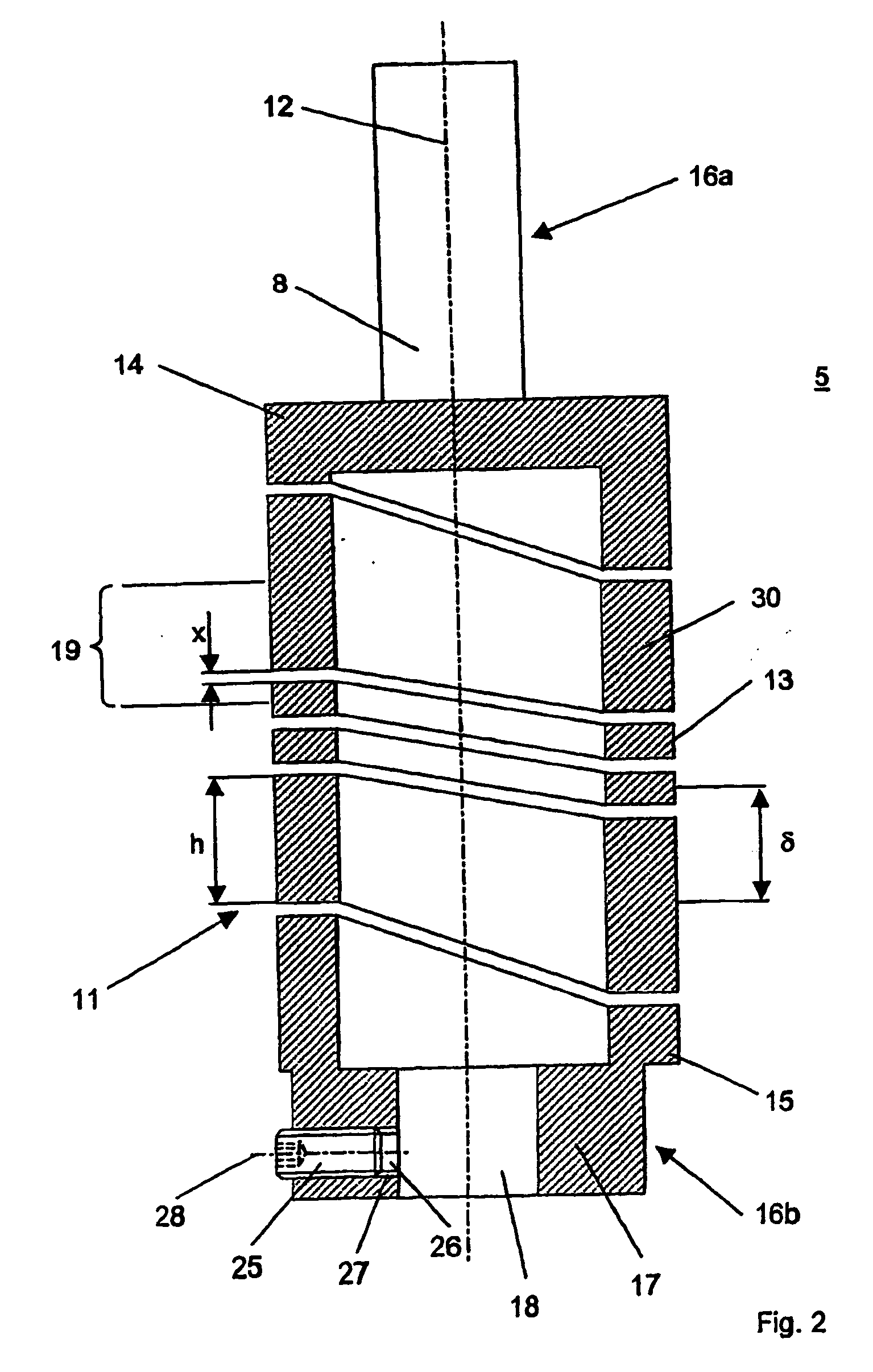Device for elastically stabilizing vertebral bodies
a technology of elastic stabilization and vertebral body, which is applied in the direction of osteosynthesis devices, internal osteosynthesis, prosthesis, etc., can solve the problems of requiring the development of the elastic manufacturing process, and achieve the effect of small compressive force, great elastic yielding and damping
- Summary
- Abstract
- Description
- Claims
- Application Information
AI Technical Summary
Benefits of technology
Problems solved by technology
Method used
Image
Examples
Embodiment Construction
[0028]FIG. 1 illustrates an embodiment of a device 1 for the stabilization of adjacent bodies 6 of the vertebra. Several bone anchoring means 2, formed, for example, as pedicle screws, are screwed into the pedicles of the bodies 6 of the vertebra to be joined such that their central axes 3 are arranged transversely to the longitudinal axis of the spinal column. The head segments 4 of the bone anchoring means 2 are coaxial with the central axes 3 of the bone anchoring means 2 and have channels 7 which extend transversely to the central axis 3. The rod-shaped connecting parts 8 of the elastic means 5 can be introduced into these channels 7, so that the elastic means 5, constructed in this case as helical springs, can be displaced relative to the channels 7 and parallel to the longitudinal axis of the spinal column before they are fixed relative to the bone anchoring means 2 by means of screws 10 provided in the head segments 4. The elastic means 5 can be elastically deformed axially r...
PUM
 Login to View More
Login to View More Abstract
Description
Claims
Application Information
 Login to View More
Login to View More - R&D
- Intellectual Property
- Life Sciences
- Materials
- Tech Scout
- Unparalleled Data Quality
- Higher Quality Content
- 60% Fewer Hallucinations
Browse by: Latest US Patents, China's latest patents, Technical Efficacy Thesaurus, Application Domain, Technology Topic, Popular Technical Reports.
© 2025 PatSnap. All rights reserved.Legal|Privacy policy|Modern Slavery Act Transparency Statement|Sitemap|About US| Contact US: help@patsnap.com



